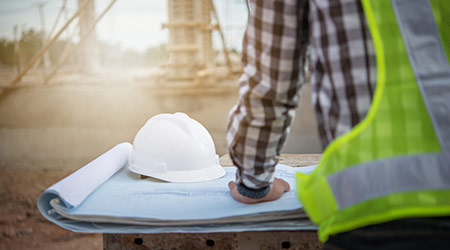What if we could make patient care better and more accessible by applying intelligent design and manufacturing principles to build healthcare spaces?
Rising costs and complexity across healthcare and construction have made it more challenging to enhance patient experiences through new healthcare facilities. One solution: deliver customization via intelligent design. Technological advancements make it possible to manufacture many healthcare building components — think complete patient and treatment rooms — offsite, to be assembled onsite for higher quality, yet more-efficient construction.
At the same time, these added efficiencies allow providers and their teams access to better options at lower prices—ultimately making healthcare more accessible to the communities that need it the most.
Standardization — in every facet — breeds better care
The healthcare industry has long used standardization to improve processes and address operational inefficiencies to offer a higher and more equitable standard of care to patients. Standardization is achieved through both government board regulations and by the hands-on education of doctors, nurses and administrators. Healthcare providers take what they learn in practice and disseminate it to their students and others in their field, improving and shaping the future of care.
Applying this high degree of standardization to their physical space is the inevitable next step. Traditional building processes can only provide close approximation. By manufacturing modular components offsite, builders are able to deliver true standardization at scale for any particular provider and across providers.
The potential for healthcare as a whole will arrive when mass adoption occurs. The more that facilities adopt manufactured components as best practice, the more providers and patients can expect access to the highest standard of care in concert with familiar healthcare environments anywhere they go.
Other advantages of advanced manufacturing of healthcare building materials
At Skender we have embarked on a vertical integration that brings together design, manufacturing and construction for a seamless process from ideation to implementation. We are opening our own advanced manufacturing factory, which will allow us to:
• Reduce and eliminate inefficient handoffs. Through the continuous communication and collaboration across a unified and integrated team, we can work toward a collective single source of truth that informs, and is responsive to, every step of the building delivery process.
• Hire and train a specialized and stable workforce. Employing skilled, union employees who are with us for the long haul, allows us to hone processes with their direct input to save time and perfect what we build.
• Ensure we adhere to code, every time. Navigating the myriad permits, plans and inspections necessary in commercial and healthcare building is time-consuming and, when mistakes are made, can result in costly re-dos. In the case of healthcare construction, adherence is a matter of health and life safety. By designing suites to meet code and assembling them under strict conditions, we deliver a higher quality, code compliant product.
• Build without checking the weather. Adverse weather is one of the most common causes of delays and added cost in any construction project. Building most of a project in a climate-controlled, enclosed environment eliminates both.
This process is a logical application of our SkenderLean approach that optimizes building processes to be more efficient and sustainable, less time-consuming, and less risky—all by emphasizing the elimination of waste. Waste encompasses anything that does not add value, including extra material, unnecessary waiting, and underutilized resources.
The big picture: advanced manufacturing can expand healthcare access
When taking a broader view, using advanced manufacturing in healthcare has the potential to create widespread change. As healthcare construction processes are honed and made more efficient through widespread adoption, they become easier to roll out to communities and demographics that are underserved.
It may even have application in disaster relief situations. Imagine taking a pre-fabricated emergency care suite out of the hospital setting and into where it’s needed most. The more accessible healthcare is, across demographics, across socioeconomic levels, and across need, the better position we are in as a society.
The next generation of healthcare design and construction
As healthcare providers and owners work to streamline and enhance the way they provide care, the setting in which they do it can be streamlined and improved, too, in a physical manifestation of their forward-thinking care model. Advanced manufacturing has the potential not just to move existing care models and systems forward, but to bring better healthcare environments to the places that need them the most.
Tim Swanson is chief design officer and Jeff Janicek is vice president of healthcare construction at Skender, a Chicago-based fully integrated design, manufacturing and construction firm.

 Grounding Healthcare Spaces in Hospitality Principles
Grounding Healthcare Spaces in Hospitality Principles UC Davis Health Selects Rudolph and Sletten for Central Utility Plant Expansion
UC Davis Health Selects Rudolph and Sletten for Central Utility Plant Expansion Cape Cod Healthcare Opens Upper 2 Floors of Edwin Barbey Patient Care Pavilion
Cape Cod Healthcare Opens Upper 2 Floors of Edwin Barbey Patient Care Pavilion Building Sustainable Healthcare for an Aging Population
Building Sustainable Healthcare for an Aging Population Froedtert ThedaCare Announces Opening of ThedaCare Medical Center-Oshkosh
Froedtert ThedaCare Announces Opening of ThedaCare Medical Center-Oshkosh